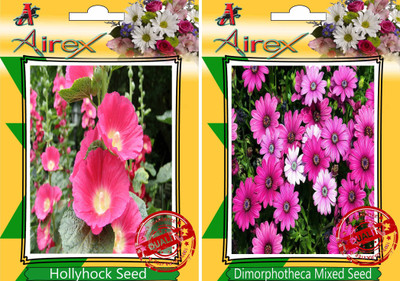Airex Hollyhock, Dimorphotheca Mixed Seed(20 per packet)
Quick Overview
Product Price Comparison
Dimorphotheca Mixed Flower Seeds:Description:Sow the Dimorphotheca seeds in a seed pan during the cool autumn months of the year. In the southern hemisphere that is April to mid June. Ensure that there is adequate drainage in the bottom of the seed pan. If the seeds stand in too much water they will more than likely rot. The best medium to sow the seeds in is a sandy loam mixture. On top of this mixture, sprinkle a thin layer of coarse river sand, 5 mm deep. It is into this sand that the seeds are sown. Keep the area weed-free and water every second day. During very hot and dry weather water daily, preferably in the early morning when it is cool. Ensure, when watering, that the seeds are not blasted out of the soil; gentle watering is advised. Ensure that the seed trays are positioned in a sunny area. Seeds should be sown 4 mm below the soil surface. Do not sow the seeds too deep. If sown too deep, they will be smothered and probably not germinate. Plant the seedlings out in September/October of the same year when they are approximately 50 mm in height.Hollyhock Flower Seeds:Description:A group of well grown Hollyhocks in bloom is worth going to see. It is really the color that we look for, because the leaves are large, coarse and grow mostly in clumps at the base of the plant. The long spikes of flowers grow from. 5 feet to 8 feet high and there are usually from five to nine blossoms in bloom on each well grown stalk. The average size is about 2 inches or 3 inches across, but 5-inch blooms can be had if good attention is given. The colors range from white to almost black and include shades of pink, flesh, rose-pink, salmon-rose, golden yellow, canary-yellow, dark red, purple-crimson, dark maroon, white and combinations of practically all these colors with either white centers or white margins. Linnaeus, who named this plant, used both Alcea (Latin form) and Althea(Greek form) from the Greek word for 'to cure'.


